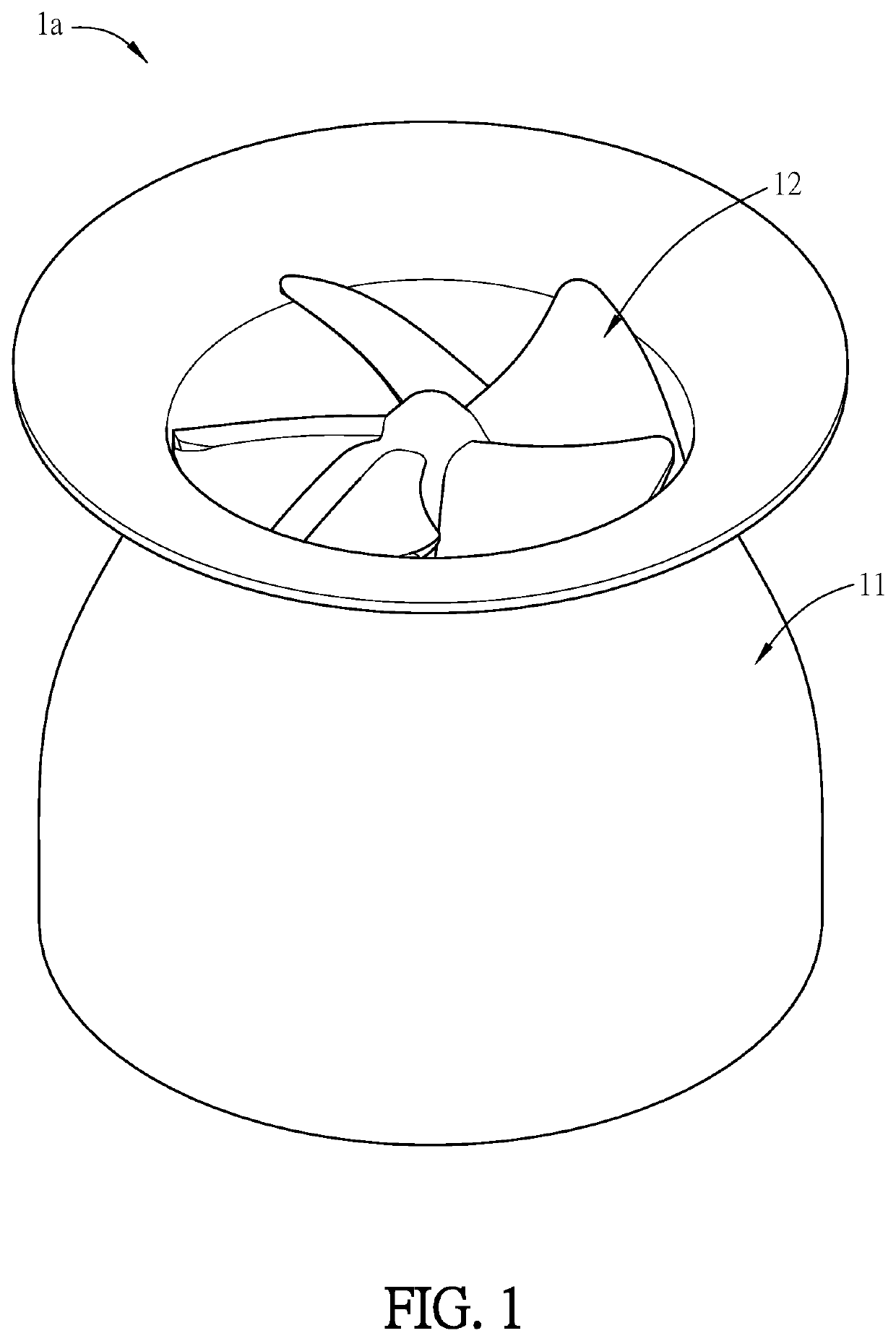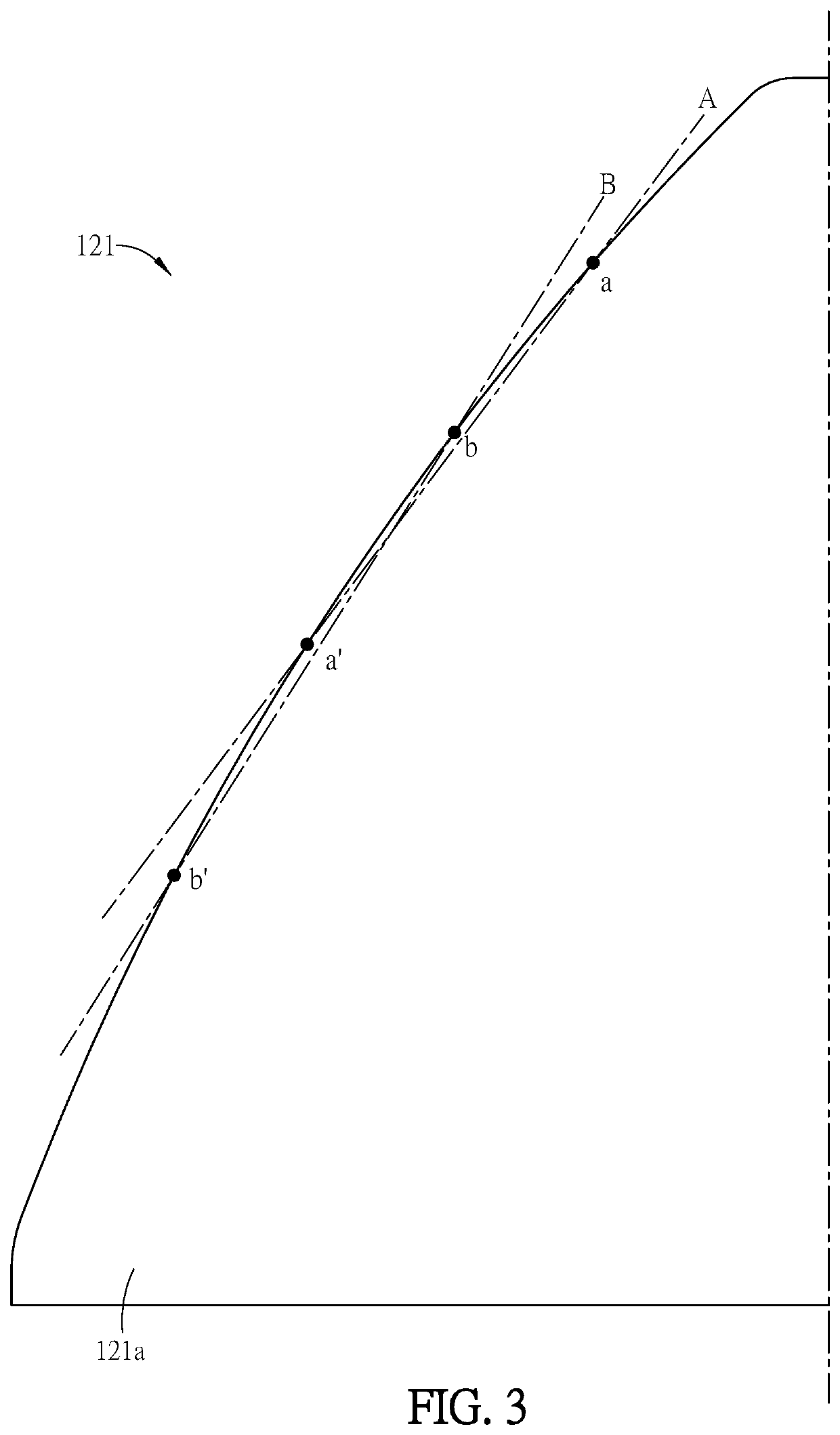Fan
a technology of fan blades and fan blades, applied in the field of fans, can solve the problems of reducing the performance and lifetime reducing the efficiency of the electronic device, and generating a large amount of waste heat during operation of current electronic devices, so as to improve the fan characteristics of the mixed-flow fan, reduce operation noise, and increase the density of the static blades
- Summary
- Abstract
- Description
- Claims
- Application Information
AI Technical Summary
Benefits of technology
Problems solved by technology
Method used
Image
Examples
first embodiment
[0046]FIG. 1 is a schematic diagram showing a fan 1a according to this disclosure, and FIG. 2 is a sectional view of the fan 1a of FIG. 1. Referring to FIGS. 1 and 2, the fan 1a comprises a frame 11, an impeller 12, and a motor 13. The frame 11 comprises a base 111, a frame housing 112, and a plurality of static blades 113. The frame housing 112 comprises an outlet O1, and the static blades 113 are disposed around an outer periphery of the base 111 and connect between the base 111 and the frame housing112. A distance D is defined between the outlet O1 and the ends 113a of the static blades 113 located adjacent to the outlet O1, and the static blades 113 are not protruding from the outlet O1. In other words, the static blades 113 are sunken in the outlet O1. The impeller 12 comprises a hub 121 and a plurality of rotor blades 122. The hub 121 has a curved surface 121a, and the slopes of the straight lines connecting any two points on the curved surface 121a are not equal. The rotor bl...
second embodiment
[0049]FIGS. 4 to 6 are schematic diagrams of a fan 1b according to this disclosure. Referring to FIGS. 4 to 6, the fan 1b comprises a frame 11, an impeller 12, and a motor 13. The frame 11 comprises a base 111, a frame housing 112, and a plurality of static blades 113. The frame housing 112 comprises and inlet O2 and an outlet O1, and the static blades 113 are disposed around an outer periphery of the base 111 and connect between the base 111 and the frame housing 112. A distance D is defined between the outlet O1 and the ends 113a of the static blades 113 located adjacent to the outlet O1, and the static blades 113 are not protruding from the outlet O1. In other words, the static blades 113 are sunken in the outlet O1. The impeller 12 comprises a hub 121, a plurality of rotor blades 122, and a plurality of guiding plates 123. The hub 121 has a curved surface 121a, and the slopes of the straight lines connecting any two points on the curved surface 121a are not equal. The hub 121 ha...
PUM
 Login to View More
Login to View More Abstract
Description
Claims
Application Information
 Login to View More
Login to View More - R&D
- Intellectual Property
- Life Sciences
- Materials
- Tech Scout
- Unparalleled Data Quality
- Higher Quality Content
- 60% Fewer Hallucinations
Browse by: Latest US Patents, China's latest patents, Technical Efficacy Thesaurus, Application Domain, Technology Topic, Popular Technical Reports.
© 2025 PatSnap. All rights reserved.Legal|Privacy policy|Modern Slavery Act Transparency Statement|Sitemap|About US| Contact US: help@patsnap.com



